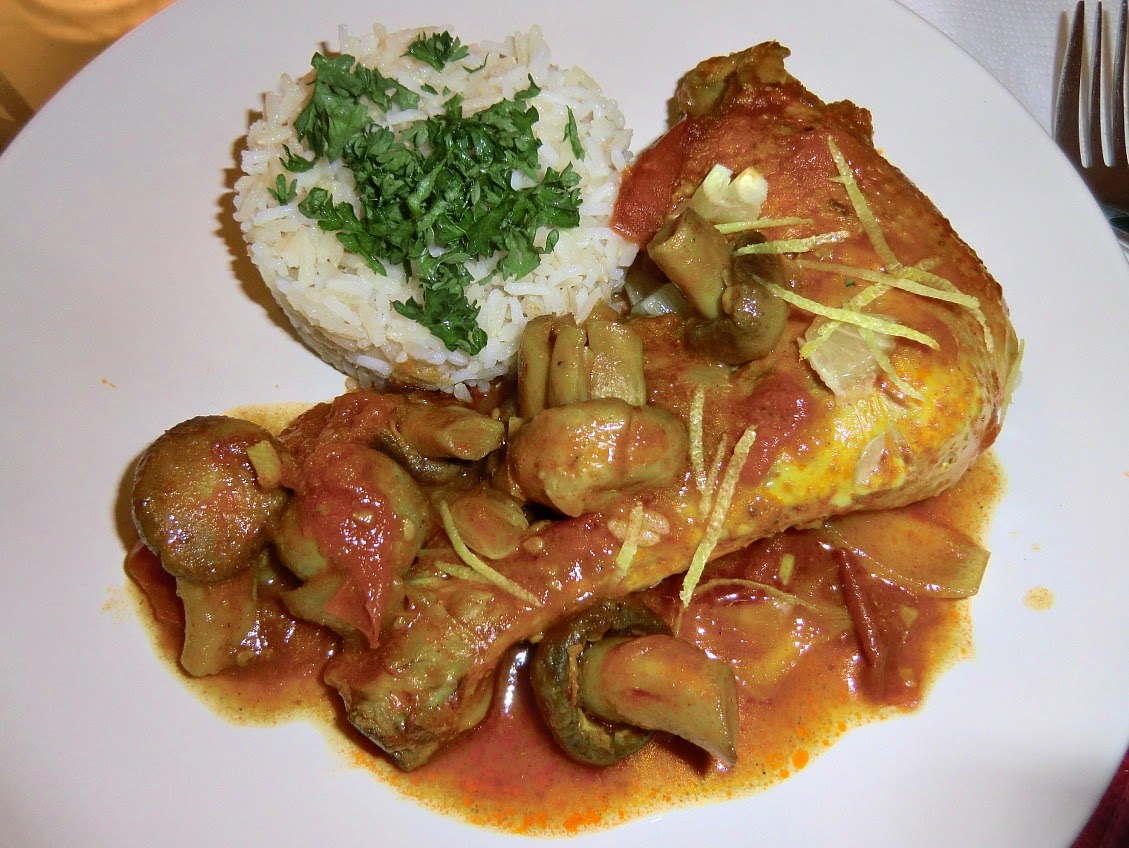Chicken leg recipe Martinique style
In France I discovered exotic mixtures of ground spices, like Poudre à Colombo, le quatre-épices and others. I recently read in a French magazine about the origins of these spice mixtures. They were introduced to Europe by the people who had worked in India during the colonial times, but they were adapted to the European taste. Le quatre-épices was developed in Saint-Malo. Le Colombo, which is a mixture of turmeric, coriander, fenugreek, cumin, mustard, white pepper and clove, is more aromatic than spicy.
These ground spice mixtures need a long time of simmering for the taste and colours to develop. They are convenient to use, but don’t keep long. The following recipe is a loose adaptation from a recipe in a French magazine. We can imagine that it brings exotic taste straight from the French Caribbean. Those who cannot find Poudre à Colombo in their shops can replace it with mild curry powder.
2 servings
2 organic chicken legs
1 large tomato, chopped
About 16 small mushrooms, champignons de Paris
1 medium onion, coarsely chopped
1 clove garlic, minced
2tbsp rapeseed oil
2 tbsp tomato pure
2 tsp paprika powder
2 tsp poudre à Colombo or mild curry powder
100 ml chicken stock
1 organic lemon
Parsley and zest of ½ lemon to decorate
In a heavy casserole warm rapeseed oil over medium-high heat and fry the chicken legs until nicely coloured on both sides. Wipe the mushrooms and add to the casserole to fry at the same time.
Reduce the heat to medium. Peel and chop the onion and mince the garlic and add to the casserole. Add the tomato pure, spices and chicken stock, and mix. Chop the tomato and add to the casserole.
Reduce the heat to simmering. Cover the casserole and let simmer for 45 minutes turning the chicken legs a few times.
Meanwhile cook brown rice to accompany the chicken. Wash and chop the parsley. Wash well the lemon and zest half of it for decoration. Then peel the lemon, cut into small pieces and add to the casserole when the dish is almost cooked. Divide on the plates.






















0 comments:
Note: only a member of this blog may post a comment.